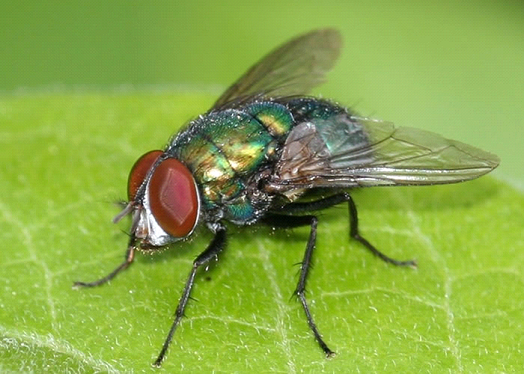
HOUSE FLIES
They are everywhere except the polar ice caps!. One pair of flies can produce more than 1 million offspring through their offspring’s’ offspring in a matter of weeks. More than 100 pathogens are associated with the house fly, including Salmonella, Staphylococcus, E. coli and Shigella. These pathogens can cause disease in humans and animals, including typhoid fever, cholera, bacillary dysentery and hepatitis.
- Flies spread diseases readily because they move quickly from rotting, disease-laden garbage to exposed human foods and utensils. Because they only have two wings, flies land often and therefore can deposit thousands of bacteria each time they land. when flies feed on waste, they collect pathogens on their legs and mouths. These pathogens are then transferred to food on tables or counters when a fly lands again. Flies regurgitate on solid food then they eat the liquid. They are capable of transmitting disease when they vomit, groom themselves or just walk on surfaces.
- The best way to repel flies is through simple, preventive measures. Flies prefer warm temperatures and are most active from late spring to early autumn. In order to best repel flies during this time, limit access to your home as much as possible, keeping doors and windows closed. You may also choose to screen windows, doors and vents. Keep garbage cans clean and securely closed. Keeping surfaces clean will make your home less appealing to flies. For best results, contact a pest control professional to discuss extermination options.
- Image credit: Pexels.com (Free for commercial use)
Author: Sumana Rao | Posted on: October 6, 2015






















Write a comment